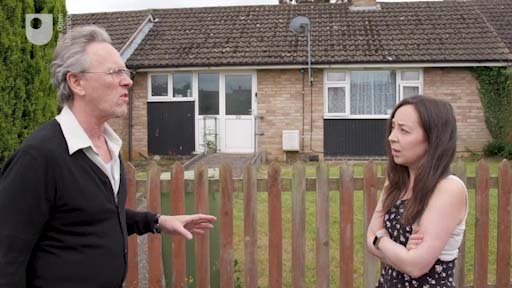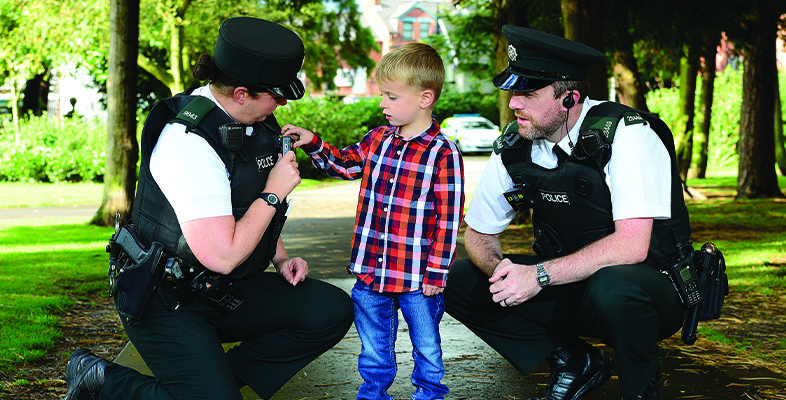3.2 Diagnosing maladaptive and adaptive behaviour
In the next activity you will move on to consider a different example, of a different type of behaviour.
Activity 4 Plotting someone’s position on the interpersonal circle
Watch the following video and pay attention to the behaviour of the male neighbour in this neighbourhood interaction. After you’ve watched the video, you will be asked to diagnose his behaviour on both the adaptive and maladaptive wheels.

Transcript: Video 5 A neighbourhood interaction
Having watched the video, and concentrating on adaptive patterns of behaviour, do you think the male neighbour displayed any adaptive behaviours? If so, where would you plot him as being on the adaptive wheel?
Discussion
The male neighbour is very very talkative indeed and it is relatively easy to identify that his behaviour is cooperative. He is social, warm and friendly (e.g. ‘you are very welcome here’). On occasion he is also supportive to the female neighbour (e.g. ‘I am so sorry to hear that’). As such it is easy to see that his behaviour is mainly cooperative behaviour but he is also clearly dominating the conversation. For that reason the behaviour could be plotted somewhere between the ‘Supportive, conversational and non-judgemental’ and the ‘social, warm and friendly’ octants. Because his behaviour is quite intense we would make the mark on the plot towards the outside of the circle.
Now, do you think he displayed any maladaptive behaviours? If so, where would you plot him as being on the maladaptive wheel?
Discussion
While the male neighbour’s behaviour is mainly adaptive, it does veer into maladaptivity in one octant – at times he is a little over-familiar and perhaps a little obsequious (e.g. ‘you look like a lovely person’) and as such we would plot him as being within the ‘overfamiliar, obsequious and desperate’ octant – but the behaviour is not too intense on the maladaptive wheel.
As you have experienced when plotting the behaviour of the male neighbour sometimes even highly cooperative people can be quite hard to deal with! In the next section you will start to consider how you may be able to work with these sorts of behaviours as you move on to consider the potential responses to such positions on the interpersonal circle.
